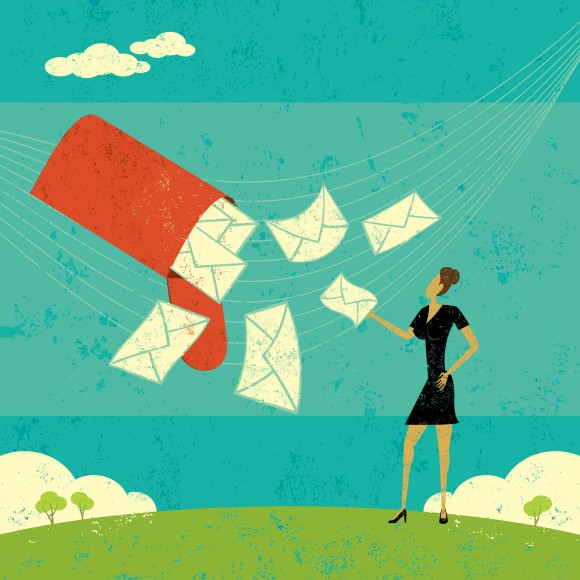Tired of a Cluttered Email Inbox? Try These 7 Changes
If you don’t learn how to manage your email inbox more effectively, it may soon be managing you. When asked what the most frustrating part of their day at work is, many businessmen and women voice complaints related to their email.
How is it that something invented with the goal of making life simpler and faster become such a nuisance?
The purpose of email
Email was created to streamline communication, particularly in the professional world. According to Niraj Rout, CEO of Mailflo.io, a tool that turns Gmail into a helpdesk, “Email should be simplistic, easy, and enjoyable to use. However, it seems far too many people lose control of their email and don’t know how to clean up the mess.”
Particularly for busy professionals, the task of cleaning up their email too often grows too big to tackle. Email morphs from a tool into a monster that eats up time and creates anxiety.
Many common complaints about email are often easy fixes … when you know where to look. If you’re struggling with an email problem that seems like it should be easy to solve, chances are that it is.
Take a look at seven ways to manage your email better.
- Turn off notifications
Social media sites such as Facebook, Twitter, OkCupid, and Tumblr obtained your email information when you signed up. By default these sites have email notifications turned on, which means that whenever somebody sends you a message, comments on your photo, or re-blogs your post, you get an email.
These emails are unnecessary; you’ll receive the same notifications again when you visit the social networking site. What’s more, they’re a distraction, because they pull you in to check your social networking pages at times when you shouldn’t.
All of these sites have options for turning off email notifications. You may be surprised how much your inbox will clear up once you switch notification emails off.
- Schedule time for email
With the near ubiquity of smart phones these days, everyone has the opportunity to check email every day, all day. This is an unnecessary time suck at the very least, and may create extra stress.
Instead of checking your email constantly, decide on a particular time of day to check, read, and respond to emails. You’ll likely finish with your inbox more quickly and do the job better, because all your attention will be focused on the task. And this should reduce your stress.
- Mark your messages
All email clients have labeling systems to mark your emails. If you haven’t taken advantage of this, you’ll be shocked by how much easier this makes managing your email.
These categorizations are ideal when you need to deal with your email but have some messages that require more time than you can spare. Marking them as unread ensures you don’t forget about them and reminds you to take the time to deal with them later.
- Make more use of other forms of communication
Email is ideal for professional correspondence, but if you give in to the temptation to use email for all kinds of communication, that can make your email unmanageable. In the case of personal and emotional correspondence, email increases the chances you may be misunderstood.
Conversations with friends and family rely on tone and inflection as part of the message. Written communication, particularly through email, can come across as more cold than you intend. Confrontation can also become drawn out and harsh via email: the anonymity and lack of facial and voice cues encourage rashness and misunderstanding.
Close out of your inbox and call your friends on the phone. This will make managing both your relationships and your email much easier.
- Unsubscribe!
Signing up for a promotion is easy, especially if it comes with an instant reward. Years of emails thereafter will clog your inbox and waste your time.
Unsubscribe from as many promotions and newsletters as possible. Most of these emails have unsubscribe links at the bottom of the message.
- Don’t invite unnecessary replies
If you send an email with an open-ended question, the response may not give you the information you need. This can generate an unnecessary back-and-forth that wastes everybody’s time and clutters your inbox.
For example, if you’re sending a message to decide on a meeting time, include your own schedule in the original message. That way, the recipient can pick a time when you’re available, rather than replying with a time you’re not and creating a potentially long email chain.
- Delete and sort
A promotional message from four years ago that thanks you for your purchase has no place in your inbox. Deleting old and unnecessary messages is key to keeping your email sanity.
Your inbox should only contain messages you have to deal with currently. Sort the messages with sentimental value or information for later into folders. Keeping your inbox clear makes managing your email much easier and less stressful.
Email is an excellent method of communication when used correctly, and getting back in control of your email is not the Herculean task it may seem. By applying the useful email strategies above, you’ll be back on top of your email correspondence in no time.




